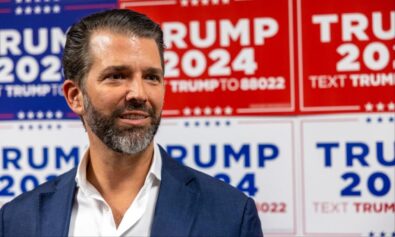
CNN News Anchor Don Lemon
Before and after he entered the White House, President Donald Trump has vilified the media, branding news agencies that report unfavorably on him “fake news.” His unrelenting attacks on journalism have led politicians, public figures and news reporters themselves to champion the benefits of a free press. But there’s one area in which the mainstream media deserves a heavy dose of criticism—their deplorable record on race, age and gender.
Since just last year, a number of major news organizations have been hit with discrimination suits. CNN is now the subject of racial discrimination suit, first filed in December, accusing managers of giving Black employees lower performance evaluations, lower pay and using racial slurs, among other misdeeds. More than 175 employees have reportedly expressed similar complaints about their experience at the network, and the total number of people involved in the class action suit is expected to expand. Also, in March, a dozen Fox News employees sued the network for “racial discrimination and creating an abusive work environment.” But cable news networks aren’t the sole targets of these racial bias suits. Both The New York Times and the Associated Press have recently faced similar charges. Two Black female Times employees last year sued the paper for age, race and gender discrimination, arguing the paper favors young white employees without families. A Black female editor at the Associated Press made almost identical allegations about that news organization in a lawsuit filed filed in 2016 as well.
These lawsuits are particularly alarming because people of color remain woefully underrepresented in newsrooms. According to the American Society of Newspaper Editors, journalists of color made up just 17 percent of employees at the 737 news agencies that responded to its 2016 survey on newsroom diversity. A lack of diversity combined with toxic work environments for the journalists of color who have broken into the industry may very well dissuade young Black and brown reporters from pursuing a career in the news, keeping the industry and its perspective overwhelmingly white.
A lack of diversity in newsrooms, especially in managerial roles, likely contributes to the fact that Black girls don’t receive nearly as much news coverage as white girls do when they go missing. In many cases, missing Black girls receive no coverage at all. Mostly white reporting staffs also play a factor in how news outlets cover crime stories involving people of color. When young Black and brown people get killed, reporters tend to make a point of stating whether these individuals were gang members. They don’t typically comment on whether white crime victims may have gang ties. By commenting in the former situation and not the latter, the media insinuates that when Black or brown men die they must have done something to deserve it.
And in the age of Black Lives Matter, a number of news agencies have faced criticism for their depiction of police killing victims. It’s common for news organizations to bring up the criminal histories of victims, even if their record did not factor into why police apprehended these individuals, brutalized or killed them. The media has also faced criticism for using old mugshots of Black victims of police violence rather than a family photo or picture posted on a social media network. When white Stanford University student Brock Turner made headlines for sexually assaulting an unconscious classmate, outraged social media users urged the media to use his mugshot in their reports about the case rather than smiling portraits of him in a suit. That’s because convicts of color aren’t presented in the same way in the media.
Arguably the top way the mainstream media has failed the public this year is by perpetuating the idea that Trump voters deserve the nation’s sympathy. Trump supporters feel alienated and economically anxious, newspapers such as The New York Times have reported as recently as last week. But such stories overlook the racial gap between whites and people of color, that whites of all class backgrounds backed Trump and the research suggests that racial animus, not the economy, led voters to back the current president. It’s not only unlikely that a racially diverse news staff would run a series of stories sympathetic to Trump voters but that such a staff would have given Trump as much attention as he received in the press leading up to the election. Without the enormous amount of free press Trump received, it’s unclear that he’d be in the White House today. But white news executives such as Les Moonves of CBS found Trump’s presidential campaign entertaining and good for ratings. Meanwhile people of color in and outside of journalism found much of Trump’s rhetoric terrifying, not amusing.
Collectively, the rash of lawsuits filed against the nation’s top news organizations aren’t just troubling because they may drive budding journalists of color away from the industry. They’re troubling because they reveal the journalism industry, which prides itself on objectivity and exposing wrongdoing, to be hypocritical. The fact that so-called liberal news agencies have been sued for racial discrimination along with Fox News shows that there’s not much of an ideological divide between these news organizations. They’re all historically male and white and have perpetuated the status quo by not hiring journalists of color or creating hostile work environments for them when they do. Whether you label a corporate media outlet liberal or conservative doesn’t matter. What does is how these news agencies perpetuate racial bias in both society and in the workplace.


